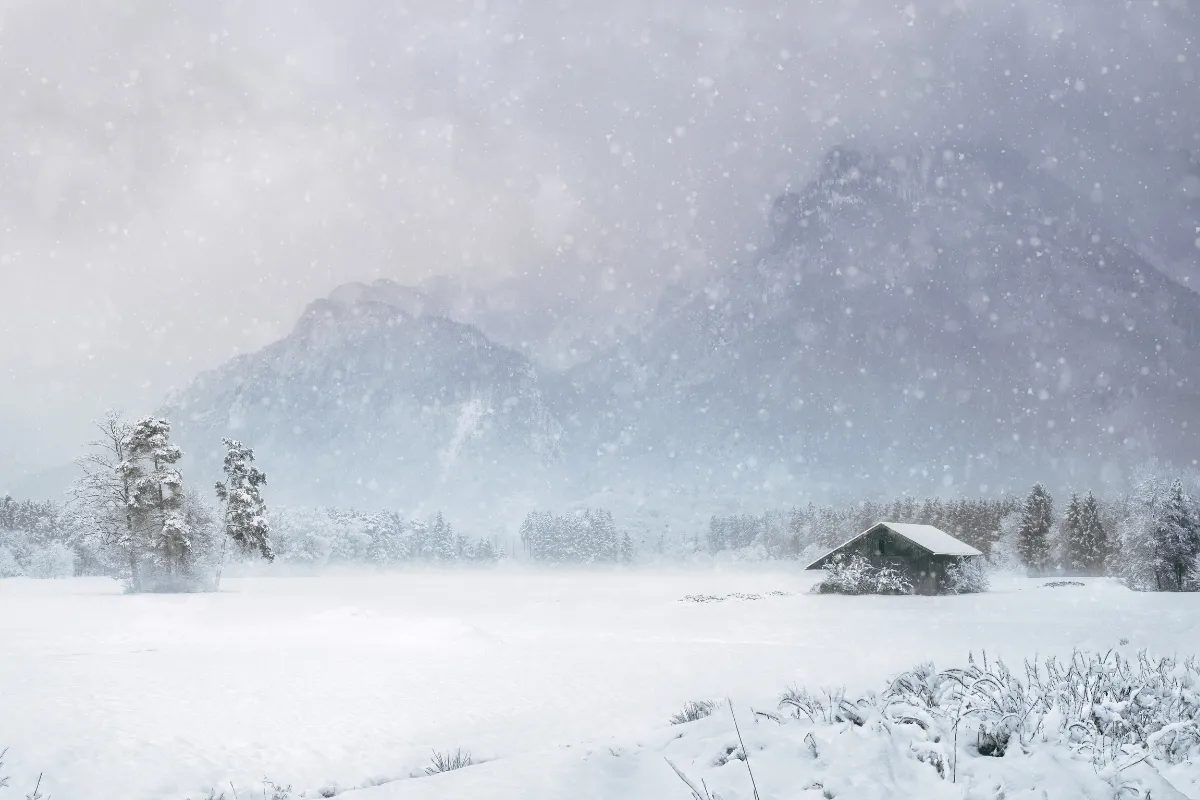
After the Storm
Last week the Midwest endured a weeklong ice storm. Since moving to San Antonio in 2021, we have experienced once in 100-year weather phenomenon every year. Leading into Valentine’s weekend 2021 and a month since moving in, temperatures dropped to 9 degrees, and starting the evening of February 15, more than 12” of snow came down over the next several days. The same weekend we had 10 family members fly in, and the following week we had a memorable rustic experience of power outages and nearly all stores being closed, relying on water supply from our pool, fireplace for heat, candles for light, and my wife’s amazing cooking for survival.

During the summer of 2022, many states, including Texas, sweltered through record heat waves, and even Northern California experienced weeks of temperatures above 110.
Then came last week’s ice storm. The devastation of this winter storm was caused by rain freezing on the trees. The sheer weight of the frozen leaves and branches caused branches of even sturdy oak trees to bend down to the ground or break.

Living in the Texas hill country north of San Antonio and surrounded by acres of trees, I could hear branches breaking off in the distance almost every few minutes. Our road was blocked by fallen branches, and over 300,000 people were stranded without power due to broken power lines.

Non-evergreen plants and trees became beautiful crystal statues as the bare branches were covered with almost 1/4” of ice. The light of the morning sun shining through the crystalized branches was an amazing display of color.
That was last week, and now temperatures are back into the high 60s, and the ice has all thawed. Branches that didn’t break have returned to almost their original height. The ice storm left a wake of significant damage to neighborhoods of fallen trees. A cacophony of activity has ensued of people with chainsaws cutting up trees and hauling the branches to landfills.
During these past three years, our country has also experienced multiple once-in-100-year events. The coronavirus outbreak in 2020 was reminiscent of the 1918 Spanish flu, with similar subsequent events, including forced business closures and stay-at-home mandates. The artic weather in 2021 limited production at manufacturer plants, combined with the previous year’s force closures, resulting in unprecedented supply chain disruptions. The lack of supply and trillions of government money distributed into the economy produced hyperinflation not seen since the 1970s. The federal reserve hastily responded to slow inflation with six consecutive interest rate hikes in 2022 and another 0.25% rate hike last week. The result of mortgage rates soaring in 2022 from a low 3% fixed rate to over 8% shut down residential home sales with fewer sale transactions in 20 years and a 90% reduction of refinance loans. The credit market for commercial properties has dramatically reduced their loan originations, and many private equity lenders have limited financial resources due to a combination of 2022 stock portfolio margin calls and loan defaults.
Understandably, the past three years have created unusual volatility in almost every business sector. A friend who owns a regional construction company is worried about the future and asked me how much worse can it get? A reasonable question.
History would indicate that the worse may be over, but the recovery may be slow. Following the same social and economic constraints of the 1917 – 1919 Spanish Flu, the US businesses had to adjust to never-before conditions that took years to recover. Like our coronavirus experience, prior to the Spanish Flu outbreak, the then economy was in a growth trend that started in 1915. The US was also recovering from the end of WW1 (1914 – 1918), which impacted manufacturing demands along with societal challenges of the return of our military personnel. From 1919 to 1923, the economy started and stopped as the flu continued to impact communities and businesses adjusting to new economic challenges. Eventually, the US economic recovery was due to the medical industry developing effective vaccines, and people celebrated the return to normal activities.
The worse was over by mid-1920, which set the stage for one of the strongest economic recoveries in decades that has been remembered as the “Roaring 20’s”. In 1924, the Dow Jones Industrial Average (DJIA) finally closed above its previous high reached in 1917 and continued to rally up to 1929, increasing over 300%.

What Does This Mean to Me?
No matter how severe the winter season is, spring and summer are always just a few months away. The US economy experiences similar periods of challenging conditions that are always followed by improving conditions, new investment opportunities, and new bull market rallies. The past three years have impacted nearly all industries to various degrees, with the few exceptions of barbers and pool cleaners. Stocks of hospitality and travel companies such as Marriott (MAR), Hilton (HLT), and Expedia (EXPE) that were crushed in 2020 became huge buying opportunities that bounced back 119%, 140%, and 233%, respectively by the end of 2021.

Same for restaurant and fast food stocks such as Cheesecake Factory (CAKE), Yum Brands (YUM), Chipotle Mexican Grill (CMG), and Ruth’s Hospitality (RUTH) which had similar outsized returns by the end of 2021 of 109%, 112%, 233%, and 267% respectively even after the summer’s profit taking.

Our view is the US economy still has more adjust to assimilate the significant challenges of the previous three years. We also believe the worst may be over. There are valid concerns about war, hyperinflation reversing into disinflation, and recession. But the strong labor market with the lowest unemployment rate since 1969 and financially stable households will be the foundation of the US recovery. Consumers are responsible for 66% of the US economy, with governments, corporations, foreign nationals, and non-profits being the balance of economic activity.
If history is an indication of the future, the full recovery leading back to a strong economic growth trend may take a few more years. But just as it is only a matter of time before spring thaws the worst of winters, so will the be the return of the US economy to better times.
CONTACT
Check the background of your financial professional on FINRA's BrokerCheck.
The content is developed from sources believed to be providing accurate information. The information in this material is not intended as tax or legal advice. Please consult legal or tax professionals for specific information regarding your individual situation. Some of this material was developed and produced by FMG Suite to provide information on a topic that may be of interest. FMG Suite is not affiliated with the named representative, broker - dealer, state - or SEC - registered investment advisory firm. The opinions expressed and material provided are for general information, and should not be considered a solicitation for the purchase or sale of any security.
We take protecting your data and privacy very seriously. As of January 1, 2020 the California Consumer Privacy Act (CCPA) suggests the following link as an extra measure to safeguard your data: Do not sell my personal information.
The information on this website is the opinion of Up Capital Management and does not constitute investment advice or an offer to invest or to provide management services. Before purchasing any investment, a prospective investor should consult with its own investment, accounting, legal, and tax advisers to evaluate independently the risks, consequences, and suitability of any investment.
Copyright 2024 | Privacy Policy | Terms & Conditions

